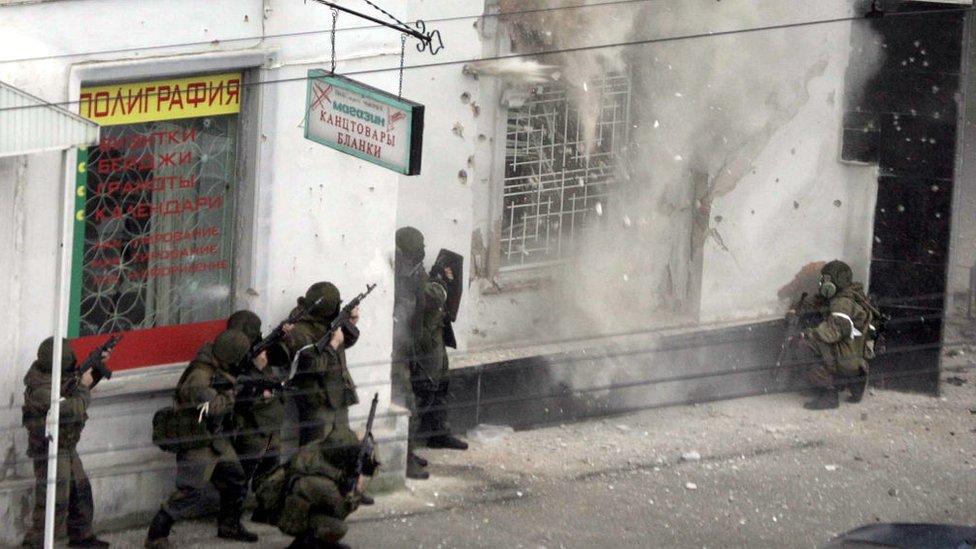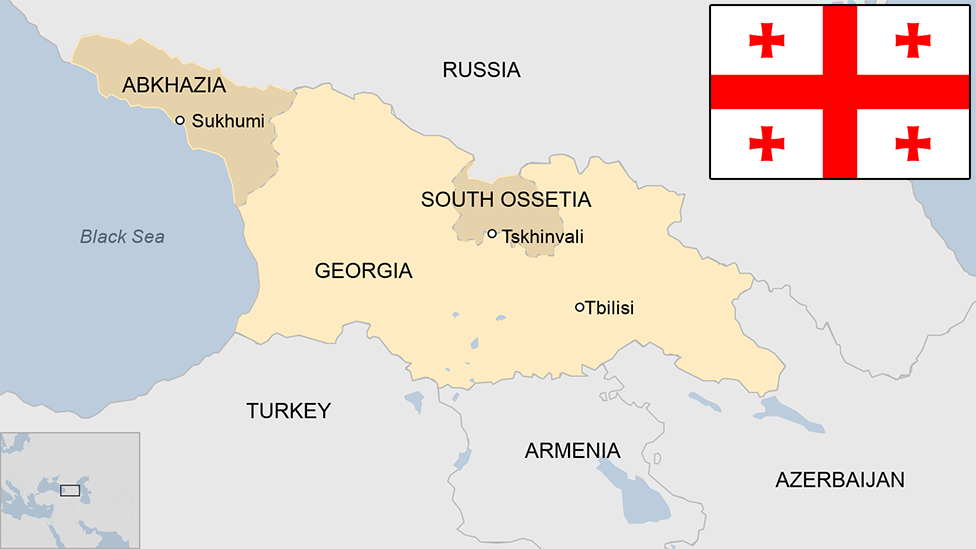Kabardino-Balkaria profile
- Published
This page is no longer being updated. It was last updated on 28 August 2023

The Russian North Caucasus republic of Kabardino-Balkaria has low living standards, high unemployment, corruption and has had its share of violence, kidnappings and organised crime to contend with.
The economy relies heavily on subsidies from Moscow. It is home to the highest mountain in Europe, Mount Elbrus, (5,642m).
The population is made up of mainly-Muslim Kabardins, as well as minorities of Turkic-speaking Balkars - around 10% of the people - and Russians.
There is friction between the Kabardins and the Balkars, and in 1992 the Balkars voted for secession.
During the early 21st Century, the republic was affected by the instability afflicting other parts of the region and the spill-over from the conflict in nearby Chechnya.
Read more country profiles, external - Profiles by BBC Monitoring, external
REPUBLIC OF KABARDINO-BALKARIA: FACTS
Capital: Nalchik
Area: 12,500 sq km
Population: 904,000
Languages: Russian, Balkar, Kabardian
Life expectancy: 70 years (male) 77 (female)
MEDIA

Ethnic Balkar men - staging a protest in Moscow - wear traditional winter cloaks
Most of the republic's newspapers are state-owned. There are three local TV services in Nalchik, which broadcast via federal networks.
Television/radio
GTRK Kabardino-Balkaria TV - state-owned, broadcasts via Russia TV channel
Independent Social TV and Radio (NOTR) - broadcasts via NTV channel
TV 27 - broadcasts via TNT channel
Online
Caucasian Knot, external - independent regional news website, in Russian and English
Open Caucasus Media, external - English-language independent regional news website
TIMELINE

Nalchik, with Mt Elbrus in the background
Key events in the modern history of Kabardino-Balkaria:
17th-19th Centuries - The area is contested by the Russian and Ottoman empires, until it finally comes under Russian control.
1921 - Following the Bolshevik revolution, the Kabardino Autonomous Region is formed, with the Balkar district added a year later.
1936 - The region becomes an autonomous republic within the USSR.
1944 - Accused by Stalin of collaboration with the Nazis, the Balkars are deported to Central Asia during World War Two and their name is dropped from the republic's title.
1957 - Under Khrushchev, the Balkars are allowed to return from exile and their name is restored to the republic's title.
1991 - The region becomes a federal republic of Russia following the collapse of the USSR.
2000s onwards - An Islamist insurgency in North Caucus breaks out between Russia and militants associated with the Caucasus Emirate and, from 2015, Islamic State groups. Incidents are mostly concentrated in the North Caucasus republics of Chechnya, Dagestan, Ingushetia and Kabardino-Balkaria.
2004 - Following the school siege at Beslan in neighbouring North Ossetia, Russia targets what it says are Islamic militants operating in Kabardino-Balkaria.
2005 - Militants stage a large-scale, armed assault on government buildings in Nalchik. Russia deploys hundreds of troops and special forces with orders to shoot to kill. Many dozens are reported dead, including militants, civilians and Russian forces.
Yarmuk, a local militant Islamic group with Chechen links, says its fighters had been involved as part of a Caucasus Front. The Caucasus Front against Russia was decreed in May 2005 by the late Chechen rebel leader Abdul-Khalim Saydullayev, in a bid further to widen Chechnya's conflict with Russia.
2010 - The region's top Muslim cleric is shot dead, in an attack blamed on militants.
2011 - Suspected Islamists attacked ski resorts in what Russia sees as preparations for assaults on the 2014 Winter Olympics in nearby Sochi.
2017 - Russia's FSB internal intelligence agency says that the last insurgent underground group in the North Caucasus has been eliminated.
2022 - Following Russia's invasion of Ukraine, up to 500 soldiers from Kabardino-Balkaria and return home, reflecting unease within the region about the war.

2005: Russian special forces storm a shop in Nalchik where gunmen had holed-up
- Published25 March 2024

- Published28 August 2023

- Published17 October 2024

- Published28 August 2023

- Published28 August 2023

- Published30 October 2023

- Published25 October 2024

- Published19 November 2024

- Published31 December 2024
